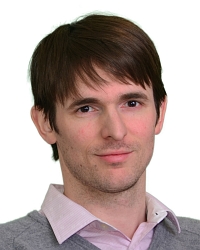TR2018-005
Alternative Objective Functions for Deep Clustering
-
- , "Alternative Objective Functions for Deep Clustering", IEEE International Conference on Acoustics, Speech, and Signal Processing (ICASSP), DOI: 10.1109/ICASSP.2018.8462507, April 2018, pp. 686-690.BibTeX TR2018-005 PDF
- @inproceedings{Wang2018apr,
- author = {Wang, Zhong-Qiu and {Le Roux}, Jonathan and Hershey, John R.},
- title = {{Alternative Objective Functions for Deep Clustering}},
- booktitle = {IEEE International Conference on Acoustics, Speech, and Signal Processing (ICASSP)},
- year = 2018,
- pages = {686--690},
- month = apr,
- doi = {10.1109/ICASSP.2018.8462507},
- url = {https://www.merl.com/publications/TR2018-005}
- }
- , "Alternative Objective Functions for Deep Clustering", IEEE International Conference on Acoustics, Speech, and Signal Processing (ICASSP), DOI: 10.1109/ICASSP.2018.8462507, April 2018, pp. 686-690.
-
MERL Contact:
-
Research Areas:
Abstract:
The recently proposed deep clustering framework represents a significant step towards solving the cocktail party problem. This study proposes and compares a variety of alternative objective functions for training deep clustering networks. In addition, whereas the original deep clustering work relied on k-means clustering for test-time inference, here we investigate inference methods that are matched to the training objective. Furthermore, we explore the use of an improved chimera network architecture for speech separation, which combines deep clustering with mask-inference networks in a multiobjective training scheme. The deep clustering loss acts as a regularizer while training the end-to-end mask inference network for best separation. With further iterative phase reconstruction, our best proposed method achieves a state-of-the-art 11.5 dB signal-to-distortion ratio (SDR) result on the publicly available wsj0-2mix dataset, with a much simpler architecture than the previous best approach.
Related News & Events
-
NEWS MERL presenting 9 papers at ICASSP 2018 Date: April 15, 2018 - April 20, 2018
Where: Calgary, AB
MERL Contacts: Petros T. Boufounos; Toshiaki Koike-Akino; Jonathan Le Roux; Dehong Liu; Hassan Mansour; Philip V. Orlik; Pu (Perry) Wang
Research Areas: Computational Sensing, Digital Video, Speech & AudioBrief- MERL researchers are presenting 9 papers at the IEEE International Conference on Acoustics, Speech & Signal Processing (ICASSP), which is being held in Calgary from April 15-20, 2018. Topics to be presented include recent advances in speech recognition, audio processing, and computational sensing. MERL is also a sponsor of the conference.
ICASSP is the flagship conference of the IEEE Signal Processing Society, and the world's largest and most comprehensive technical conference focused on the research advances and latest technological development in signal and information processing. The event attracts more than 2000 participants each year.
- MERL researchers are presenting 9 papers at the IEEE International Conference on Acoustics, Speech & Signal Processing (ICASSP), which is being held in Calgary from April 15-20, 2018. Topics to be presented include recent advances in speech recognition, audio processing, and computational sensing. MERL is also a sponsor of the conference.
